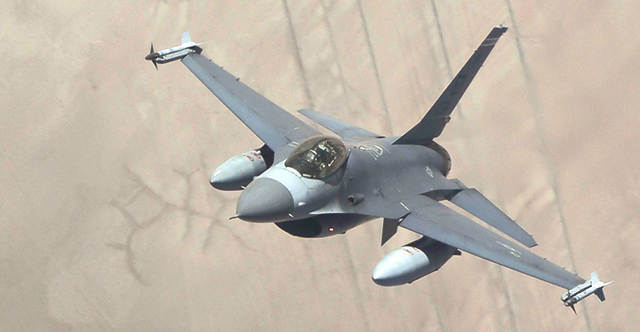Northrop Grumman says that its Scalable Agile Beam Radar (SABR) is "well positioned" to secure contracts to upgrade US Air Force and Taiwanese Lockheed Martin F-16 Fighting Falcons with a new active electronically scanned array (AESA) system despite a recent loss to rival Raytheon in South Korea.
"The US Air Force and Taiwan are working hand-in-hand together," says Joseph Ensor, Northrop's vice president for its targeting systems division. "They're a separate programme from what Korea did with their competition."
 |
|---|
Lockheed Martin |
South Korea conducted a commercial source selection for their new radar, ultimately selecting the Raytheon Advanced Combat Radar which will be integrated onto the F-16 by BAE Systems.
The USAF, meanwhile, has selected Lockheed to be its prime integrator for the combat avionics programmed extension suite (CAPES) upgrade. The service has left it up to the company to choose a new radar for the USAF's 300 healthiest F-16s.
"I think we're well positioned based on the technology and our offering," Ensor says. "Nothing's a given, we have to compete and win that programme, but I still believe we're well positioned.
Ensor says that the USAF's CAPES programme will be the starting point for future F-16 upgrade foreign military sales (FMS) contracts, including the Taiwan upgrade effort. "Taiwan will be one of the launch customers for this F-16 AESA upgrade," he says.
Northrop expects that Lockheed will pick a radar for the CAPES programme in August, Ensor says.
Picking the SABR would offer many benefits for the USAF and Lockheed, Ensor says. The SABR is highly common in terms of hardware and software with radars Northrop is already building for the USAF's fifth-generation fighter fleet comprised of Lockheed-built F-22 Raptors and F-35 Joint Strike Fighters.
For future upgrades, that means software developed for the Raptor's APG-77 radar and F-35's APG-81 system can be ported over to the SABR with only minor tweaks, Ensor says. Moreover, pilots transferring from one airframe to another would be familiar with many of the displays, company officials say.
Source: Flight International


























